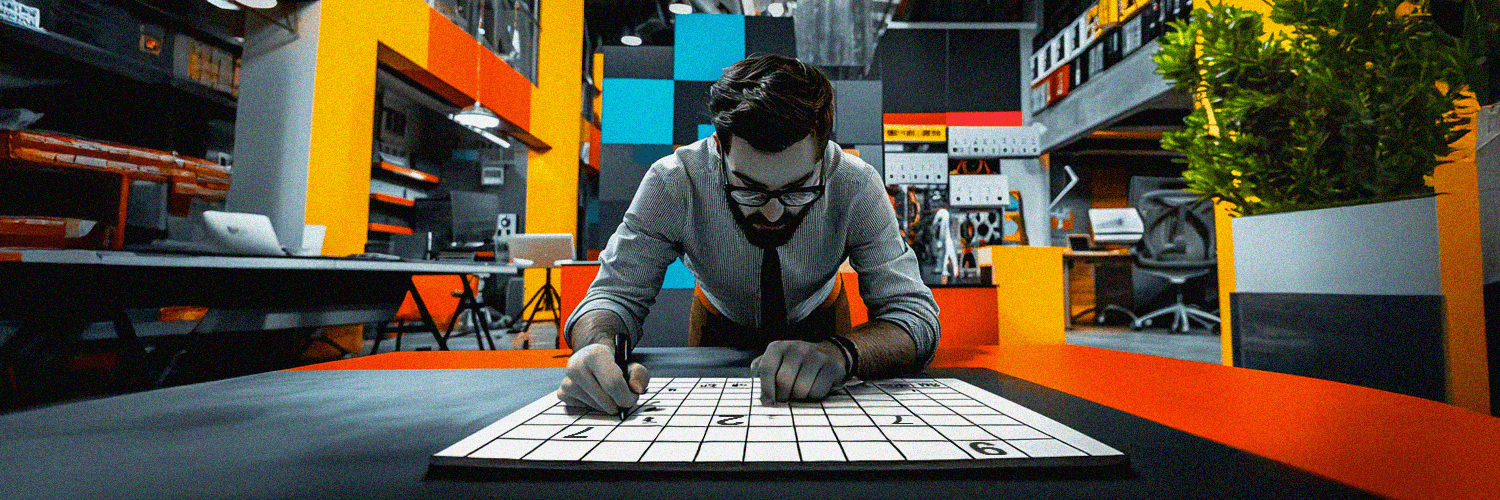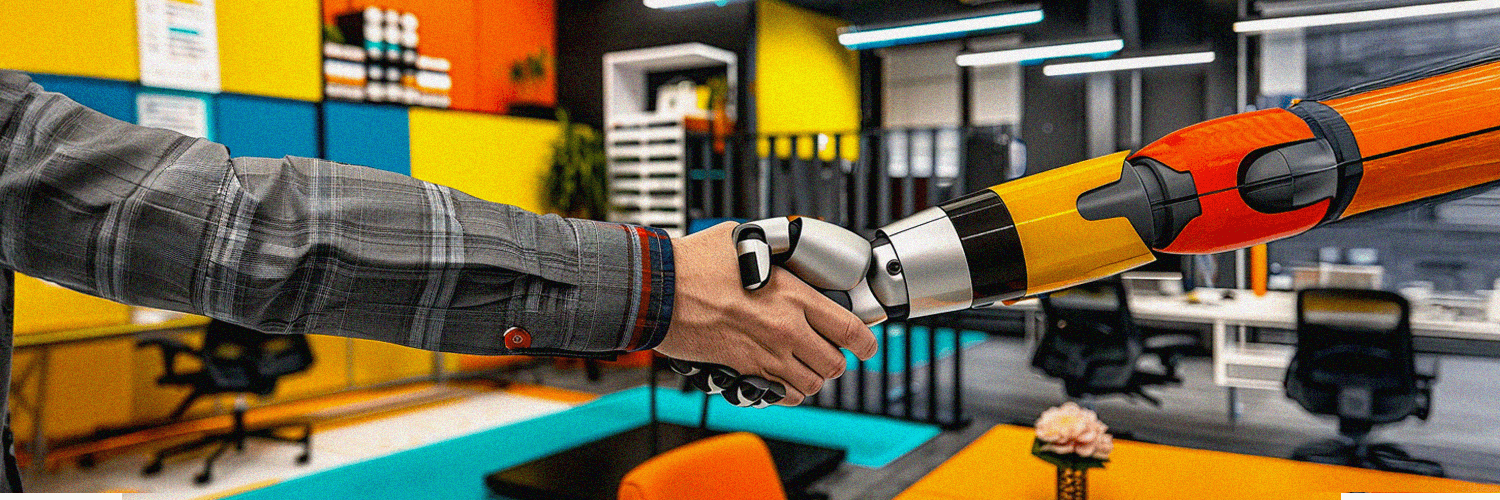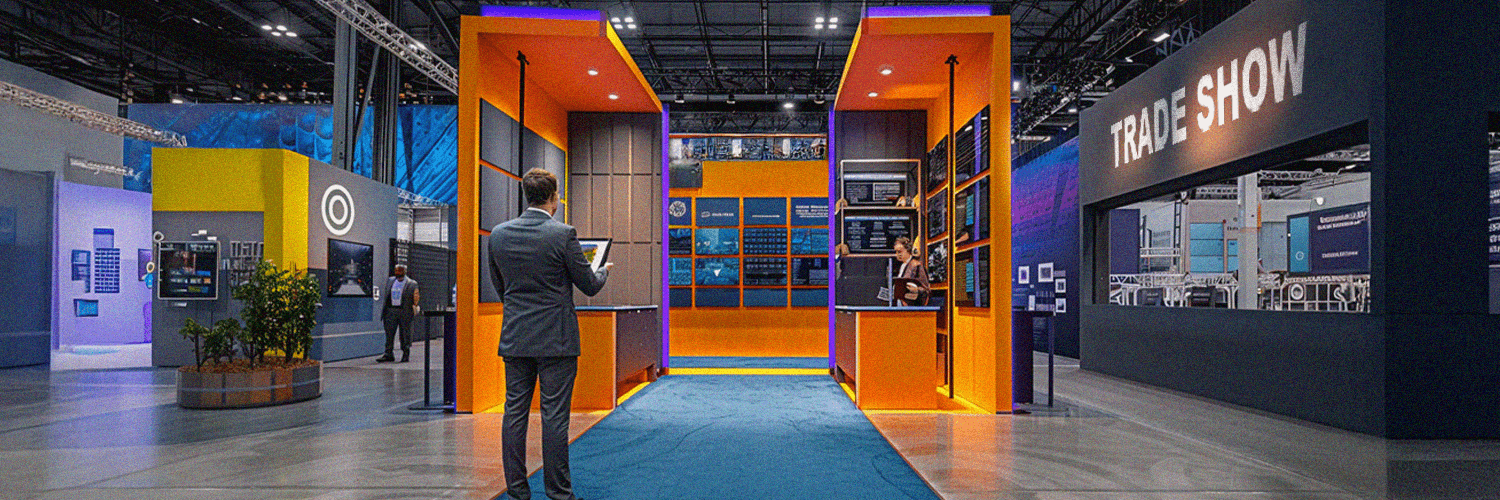Office hoteling is becoming increasingly popular in the modern workplace as an innovative solution to make the most of office space and boost productivity. By finding the right balance between flexibility and efficiency, it transforms the traditional office into a vibrant and collaborative environment.
If you’re considering implementing office hoteling in your organization or are simply curious about what it entails, this comprehensive guide will provide valuable insights into its benefits, potential drawbacks, best practices, and practical tips for making it a reality.
TL;DR:
- Office hoteling is a reservation-based system where employees book workstations or meeting rooms as needed, optimizing office space and promoting productivity.
- It differs from hot desking as it requires advance reservations and is better suited for remote-dominant workforces, while hot desking is first-come-first-served and works for in-office employees.
- Benefits of office hoteling include cost savings, flexibility for employees, increased efficiency, improved visitor management, and more resources for employee well-being.
- Disadvantages include lack of personalization, sanitation concerns, emergency challenges, and support staff difficulties.
- To implement office hoteling, consider factors like the nature of work, current space utilization, remote work possibilities, and employee preferences.
- Create zones for different types of work, provide attractive desks, choose software that streamlines the process, and designate a person in charge.
- Best practices include effective communication, thorough planning, prioritizing employee comfort, conducting pilot tests, and monitoring and evaluating the system.
- Office hoteling can transform the workplace but should be carefully considered, addressing potential drawbacks and ensuring stakeholder collaboration.
What is Office Hoteling?
Office hoteling is undoubtedly revolutionizing the way we conduct business in shared workspaces. However, before diving deeper into the ins and outs of this trend-setting approach, it’s vital to understand its key characteristics.
Definition of Office Hoteling
At its core, office hoteling refers to a reservation-based system where employees book available workstations or conference rooms as needed instead of having assigned desks or offices. This flexible arrangement allows staff members to choose their preferred workspace while significantly reducing wasted floor space due to unoccupied seats.
Differences between Office Hoteling and Hot Desking
While both concepts aim at creating versatile work environments with flexible seating options for employees, there are subtle differences between hoteling and hot desking:
- In an office hoteling setup, employees reserve their desired workstation in advance, before coming to the office. On the other hand, hot desking operates on a first-come-first-served basis.
- Office hoteling strategy is better suited for companies whose workforce predominantly operates remotely and do not require a dedicated desk daily. Meanwhile, hot desking may work better for organizations with a high in-office employee presence.

Benefits of Office Hoteling
Cost Savings
One significant advantage of office hoteling is the potential for cost savings. With a hoteling strategy, businesses can reduce overhead costs by optimizing space utilization and minimizing underused areas. In fact, it’s estimated that companies can save up to 30% on real estate expenses when implementing an effective office hoteling policy. This efficient use of space also reduces energy consumption, as fewer resources are required to maintain and power unused workstations.
Flexibility for Employees
Office hoteling allows employees to choose where in the office they work. By eliminating assigned seating, employees can select a workspace that best suits their needs for the day or task at hand. It also accommodates workers who are only occasionally on-site due to travel or remote work arrangements, giving them access to necessary resources without occupying permanent desk spaces.
Increased Efficiency
Workspace hoteling improves efficiency in organizations by reducing disruptions and promoting collaboration. It helps employees use their time effectively by eliminating unexpected seat and conference room occupancy issues. It also encourages teamwork and communication among colleagues who may have been physically separated due to fixed seating arrangements.
Furthermore, office hoteling software streamlines booking processes and automatically updates real-time availability data so employees can quickly find suitable spaces and plan their schedules. This data also allows management teams to make informed decisions about future workplace changes and base them on actual usage patterns.
Visitor Management
One often overlooked aspect of office hoteling is its ability to improve visitor management practices. Whether you’re expecting clients or external partners for meetings or interviews onsite, having a flexible workspace arrangement allows your company to accommodate these visitors easier. This ensures that your office remains accessible and welcoming, ultimately contributing to a positive impression of the company and its brand.
More Resources for Employees
Lastly, implementing office hoteling opens the door to reallocating resources toward employee well-being and productivity. For instance, savings from reduced real estate costs can be invested in high-quality ergonomic furniture or technology improvements that benefit all team members. Moreover, transforming underutilized spaces into communal areas or shared facilities like gyms, cafes, and relaxation zones encourages employees to stay engaged and build camaraderie – resulting in a happier, healthier workplace overall.
Disadvantages of Office Hoteling
Lack of Personalization
While office hoteling offers numerous benefits, such as cost savings and flexibility, it also has drawbacks. One such drawback is the need for more personalization. When employees share hoteling workstations, there isn’t an opportunity to customize their workspace to suit individual preferences or display personal items. This may reduce comfort levels for employees who prefer working in a personalized area, potentially impacting their productivity and job satisfaction.
To address this issue, companies can provide storage spaces where employees can temporarily store their personal belongings while using a hoteling desk or consider creating designated zones with various layouts and types of furniture that cater to different work styles.
Sanitation Concerns
Shared workspaces like hoteling offices tend to raise sanitation concerns since multiple people use the same workstation daily. To maintain cleanliness in such environments, companies must develop thorough cleaning protocols, including regular sanitization of desks, keyboards, and other common areas.
Emergencies Aren’t Always Easy to Handle
In emergency situations, companies implementing office hoteling may face difficulty locating employees quickly due to flexible seating arrangements and constant movement throughout the workplace. Organizations need a clear communication plan outlining expected behaviors and procedures for all workers in shared spaces to ensure employee safety during emergencies or evacuation drills. Integrating technology solutions that support real-time monitoring can aid considerably in tracking employee whereabouts during such events.
Support Staff Can Face Challenges
Office support staff may encounter challenges when adapting to the office hoteling model. For instance, IT teams may require additional resources due to frequent device setup changes as individuals transition between seats within shared workspaces. Mail delivery personnel might struggle to identify recipients as employees’ locations shift with each new reservation cycle.
Companies can mitigate these issues through effective communication channels, providing clear guidelines and expectations for hoteling office employees. Utilizing reservation management software that includes staff-specific features might also streamline the workflow for support teams.
Confusion May Occur
Adopting a hoteling office model could cause confusion among employees who are used to working in a designated space with fixed seating arrangements. During the initial transition, workers may need help to locate their reserved desks and navigate new layouts within shared workspaces.
To minimize confusion, implementing proper signage and directions based on workstation reservations can be helpful. Offering ongoing support via a dedicated person managing the hoteling system will assist in resolving issues promptly. In time, employees should grow more accustomed to this dynamic workplace and appreciate its flexibility benefits.

How to Create an Office Hoteling Space?
Making the Right Decision for Your Office
Before implementing office hoteling, it’s essential to determine if this arrangement aligns with your company culture and objectives. To make an informed decision, consider the following factors:
- The nature of the work performed by your employees
- Current office space utilization rates
- Remote work possibilities
- Employee preferences
Keep in mind that workplace hoteling might not be suitable for all organizations. Ensuring its feasibility for your team is crucial before moving forward.
Explaining the Vision to Employees
Communication becomes vital once you have decided to adopt hoteling in the office. Take time to explain the vision behind office hoteling and outline expected benefits for your employees, such as cost savings, flexibility, and efficiency improvements. Doing so will help build transparency and trust. Employee feedback should also be encouraged at various stages throughout creating and maintaining a hoteling workspace.
Assessing the Space You’re Working With
A comprehensive evaluation of your current workspace is necessary when planning office hoteling implementation. Examine factors like:
- Layout configurations
- Furniture options
- Storage needs
- Availability of meeting rooms and quiet areas
This thorough analysis provides a solid basis for developing an efficient office hoteling layout that suits individual job requirements and organizational goals.
Creating Zones for Different Types of Work
Fostering productivity within an office hotel model entails providing appropriately designated zones catering to various work types. Consider including these zones in your design:
- Open collaborative spaces: enables employees to engage in group discussions or collaboration sessions.
- Quiet focus areas: provides privacy for deep concentration on tasks requiring minimal disruptions.
- Meeting rooms: equipped with video conferencing facilities for virtual meetings or large group interactions.
- Recreational areas: offer comfortable spaces where staff members can relax or rejuvenate during breaks.
You create an activity-based environment that meets varying employee needs and preferences by offering diverse work zones.
Setting Up Attractive Desks
Office hotel workstations should be visually appealing to encourage usage. Opt for ergonomic chairs and adjustable desks for comfort while incorporating tasteful decorations that establish a welcoming atmosphere. Be mindful of maintaining consistency in your furniture – this continuity will reinforce your company’s identity and culture.
Choosing Software That Standardizes the Process
Efficient software is indispensable for managing office hoteling systems. Numerous solutions, for example, YAROOMS, cater explicitly to workspace hoteling; when selecting one, keep an eye out for features like:
- Real-time desk booking
- Comprehensive reporting tools
- Spatial visualization capabilities
- Compatibility with third-party applications
Investing in robust and user-friendly software smoothens daily operations, empowering employees to participate actively in the office hoteling process.
Considering Specific Features Needed
Understanding your organization’s unique requirements enables you to develop tailored strategies within your office hotel model. This approach may include secure lockers, recreation facilities, or mobile whiteboards. By focusing on specific necessities, you will create a space that caters directly to staff preferences and working habits.
Designating a Person in Charge
Having designated personnel overseeing workspace hoteling operations ensures streamlined processes and fewer disruptions. Their duties may encompass monitoring system usage, resolving any challenges staff members face due to office hoteling policies, performing regular maintenance checks on spaces and equipment, and providing recommendations for improvement.
Best Practices for Bringing Office Hoteling to Your Company
Implementing an office hoteling system can significantly benefit your organization. However, following best practices to achieve a seamless transition and optimize productivity is crucial. In this section, let’s discuss critical steps to effectively introduce the hoteling concept in your workplace.
Communication Is Key
It is essential to clearly communicate the rationale behind implementing office hoteling and how it aligns with company goals. Explain the vision and objectives of transitioning from traditional offices to the hoteling model, highlighting benefits such as cost savings, employee flexibility, and increased efficiency. Encourage an open dialogue where employees can express concerns and ask questions. This will facilitate buy-in from your team members and drive a successful implementation.
Planning for Success
A well-thought-out plan is necessary to ensure that hotel workspace properly serves its intended purpose:
- Assess current usage patterns: understand the needs of different departments or teams within your organization by analyzing their work patterns.
- Set reservations policies: establish clear guidelines on reservation rules for workstations and meeting rooms.
- Choose appropriate technology: invest in modern platforms that enable efficient booking processes and provide insight into space utilization.
Prioritize Employee Comfort
During the transition period your priorities must remain focused on employee satisfaction:
- Design zones catering to varying types of tasks such as individual work, teamwork, brainstorming sessions, quiet spaces, or leisure areas.
- Offer ergonomic furniture at shared hotel seating in-office spaces designed with dedicated storage options for personal belongings.
- Ensure easy access to resources like power outlets, Wi-Fi connectivity, telecommunication tools (phones or headsets), collaboration software (e.g., Skype or Zoom), and whiteboards/meeting room technology.
Conduct Pilot Tests Before Full Implementation
Before launching office hoteling across all departments, pilot it with selected teams and identify potential challenges early on:
- Train designated personnel: conduct thorough training sessions for employees and support staff in using office hoteling systems.
- Collect feedback: gather insights from pilot tests, learn about any difficulties team members or facility management personnel face, and address them accordingly.
- Make adjustments as needed: implement necessary changes based on the findings of the pilot program to achieve smoother transitions on a larger scale.
Monitor and Evaluate
Regular monitoring and evaluation ensure that your office hoteling system remains efficient:
- Analyze data collected from workspace hoteling software to understand occupancy rates and space utilization trends.
- Seek ongoing feedback from employees regarding potential issues or improvements for productivity enhancement.
- Continuously reevaluate policies, processes, technology solutions, and environment arrangements in light of business growth or changing needs.
By carefully planning each step in the transition process while keeping employee satisfaction at its core, you can successfully bring office hoteling into your organization.

Wrapping Up
As businesses continue to evolve and adapt to new working environments, office hoteling has emerged as an innovative way to maximize efficiency, reduce costs, and foster flexibility. The hoteling model can effectively transform any workplace through proper planning, adequate assessment of available space and resources, and appropriate technology.
However, before diving into this modern approach to workspace management, it’s essential for companies to carefully weigh the potential disadvantages of office hoteling. Personalization concerns, sanitation issues, and employee confusion should not be overlooked in decision-making.
Ultimately, with a thorough evaluation and strategic planning, office hoteling might be the solution that transcends traditional work protocols and leads organizations toward more significant growth in today’s dynamic business landscape. Embracing change is crucial; adopting office hoteling policies could become a game changer in optimizing your company’s overall efficiency while ensuring employee satisfaction.
So as we embrace office hoteling—from idea to reality—it’s vital that all stakeholders collaborate openly and remain flexible throughout the transition period.
Office Hoteling: FAQ
What Does Hoteling Mean in an Office?
Office hoteling is a modern office management strategy that optimizes workspace resources and offers employees more flexibility. In this system, employees do not have permanent or assigned workstations but instead reserve desks, meeting rooms, or other shared spaces in advance. The primary objective of implementing office hoteling is to maximize office space utilization and adapt quickly to changing workforce demands.
Some key features associated with hoteling at work include:
- Reservable workspaces (desks, private offices, conference rooms)
- Office hoteling policy outlining guidelines for reservations and usage
- Advanced booking technologies or software management systems
- Integration of diverse work settings that cater to different job functions
By embracing the hoteling concept, organizations can facilitate greater employee collaboration, reduce overhead costs, and encourage adaptable working habits.
What Is the Hoteling Model for Offices?
The hoteling model revolves around flexible access to different workspaces within an organization’s premises. Taking cues from the hospitality industry—hence its name—it eliminates traditional assigned seating in favor of on-demand reservations for shared stations or private zones when required.
Key components of the successful execution of a hoteling office model include:
- A well-defined workplace-driven vision that ensures all employees understand and comply with reservation policies
- A workspace layout divided into distinct zones tailored to various roles and preferences (e.g., collaborative spaces, quiet areas)
- Customizable desk amenities like adjustable chairs or monitor stands to create personalized work environments during bookings
- Technology-driven reservation tools synchronized seamlessly with company scheduling processes
As businesses continue adopting agile strategies for accommodating hybrid workforce models based on remote operations, teleworking, or freelancing arrangements, the appeal of a flexible time-based accommodation system has grown increasingly popular among previously conventional office settings.
What Is the Difference Between Hot Desking and Hoteling?
While both hot desking and hoteling fall under the umbrella of flexible workplace arrangements, they operate based on distinct principles. Despite their similarities in promoting resource optimization and flexibility, two key differences set them apart:
- Reservation Requirement: hot desking operates on a first-come-first-served basis, where employees can choose any available desk upon arrival. Conversely, office hoteling necessitates advance reservations for shared workspaces through dedicated software or management systems.
- Desk Customization: in hot desking, it’s common to find generic workstations without adjustment capabilities, as employees switch between spaces constantly and must quickly adapt to these configurations. Hoteling desks are designed for customization during reservation periods, allowing users to personalize their environment according to ergonomic preferences.
In essence, both approaches strive to make better use of available workspace resources by eliminating assigned seating and encouraging flexibility among staff members; however, office hoteling takes this thinking one step further by incorporating a more structured reservation system and increased emphasis on tailoring user experiences within shared environments.












